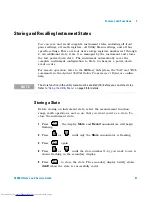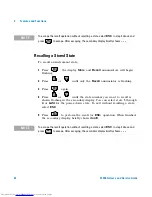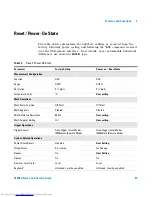
34405A User’s and Service Guide
49
Measurement Tutorial
3
Noise Rejection
Rejecting Power
–
Line Noise Voltages
A desirable characteristic of integrating analog–to–digital (A/D) converters
is their ability to reject power–line related noise present with DC input
signals. This is called normal mode noise rejection, or NMR. The
multimeter achieves NMR by measuring the average DC input by
"integrating" it over a fixed period.
Common Mode Rejection (CMR)
Ideally, a multimeter is completely isolated from earth–referenced circuits.
However, there is finite resistance between the multimeter's input
LO
terminal and earth ground, as shown below. This can cause errors when
measuring low voltages which are floating relative to earth ground.
Refer to
“Measurement Noise Rejection”
on page 130 for the multimeter’s
NMR and CMR characteristics.
Noise Caused by Magnetic Loops
If you are making measurements near magnetic fields, take caution to
avoid inducing voltages in the measurement connections. You should be
especially careful when working near conductors carrying large currents.
Use twisted–pair connections to the multimeter to reduce the noise pickup
loop area, or dress the test leads as close together as possible. Loose or
Vf
R
s
R
i
C
i
Ideal
Meter
V
f
= Float Voltage
R
s
= DUT Source Resistance
Imbalance
R
i
= Multimeter Isolation Resistance
(LO-Earth)
C
i
= Multimeter Input Capacitance:
V
f
x R
s
Error (v) =
R
s
+ R
i
HI
LO
V
test
Downloaded from
www.Manualslib.com
manuals search engine






























